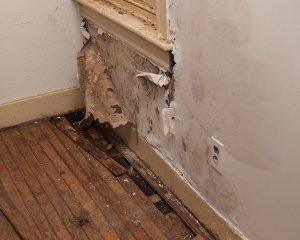On this page in the next paragraph you can find some quality content on the subject of Most Common Causes of Leaky Pipes.

Leaks not just trigger waste of water yet can also trigger unnecessary damage to your residence and promote undesirable natural growth. Unfortunately, water leakages may go undetected given that most of the pipework in our residence is hidden. By looking and recognizing for daily scenarios that trigger leaks, you can safeguard your home from future leakages and also unneeded damages. Today, we will check out 6 leak causes that might be creating your pipelines to trickle.
Instant temperature level adjustments.
Extreme temperature level modifications in our pipes can trigger them to broaden as well as get all of a sudden. This expansion and contraction may cause splits in the pipelines, especially if the temperature are listed below cold.
Rusty water systems
This could be the reason of discoloration or bending on your water pipelines. If our plumbing system is old, consider changing the pipes since they are at a greater risk of corrosion than the more recent versions.
Malfunctioning Pipeline Joints
The factor at which your pipes connect is frequently the weakest link in the waterline. Pipe joints can degrade gradually, causing water leaks. The bulk of pipe joints are not quickly noticeable. If you have noisy pipes that make ticking or banging noises, particularly when the warm water is turned on, your pipe joints are most likely under a lot of pressure. It is advisable to have your plumber examine your system yearly.
Trespassing roots
Most water leakages start outside your home rather than inside it. If you see an unexpected decrease in water stress, state in your faucet, take some time to go out and examine your lawn. You might see wet spots or sinkholes in your lawn, and that may mean that tree roots are getting into water lines causing water to permeate out. You can have your plumber check for breach, specifically if you have trees or shrubs near your home.
Poor Water Connectors
At times, a leakage can be brought on by loosened tubes and also pipelines that provide your home appliances. More often than not, shifting is what creates the loosened water Connections. You could discover in the case of a cleaning equipment, a pipe may spring a leakage because of shaking throughout the spin cycle. In case of a water connections leakage, you may observe water running directly from the supply line or pools around your appliances.
Clogged Drains
Obstructed drains pipes might be aggravating as well as inconveniencing, however they can often wind up causing an overflow resulting in rupture pipelines. Keep getting rid of any kind of materials that might decrease your drains pipes that can clog them to prevent such aggravations.
All the above are causes of leakages yet not all water leaks arise from plumbing leaks; some leaks could come from roof leaks. All leakages need to be repaired instantly to prevent water damages.
Leakages not just cause waste of water yet can additionally create unneeded damage to your house and also advertise undesirable natural development. By comprehending and also looking for daily circumstances that cause leaks, you can secure your house from future leaks and unneeded damages. Today, we will look at six leakage triggers that might be creating your pipelines to leak.
At times, a leak can be triggered by loosened hose pipes and pipelines that supply your appliances. In situation of a water links leakage, you might discover water running directly from the supply line or puddles around your appliances.
How To Check For Water Leak In Your Home
How To Check for Leaks
The average household's leaks can account for nearly 10,000 gallons of water wasted every year and ten percent of homes have leaks that waste 90 gallons or more per day. Common types of leaks found in the home are worn toilet flappers, dripping faucets, and other leaking valves. These types of leaks are often easy to fix, requiring only a few tools and hardware that can pay for themselves in water savings. Fixing easily corrected household water leaks can save homeowners about 10 percent on their water bills.
To check for leaks in your home, you first need to determine whether you're wasting water and then identify the source of the leak. Here are some tips for finding leaks:
Take a look at your water usage during a colder month, such as January or February. If a family of four exceeds 12,000 gallons per month, there are serious leaks.
Check your water meter before and after a two-hour period when no water is being used. If the meter changes at all, you probably have a leak.
Identify toilet leaks by placing a drop of food coloring in the toilet tank. If any color shows up in the bowl after 10 minutes, you have a leak. (Be sure to flush immediately after the experiment to avoid staining the tank.)
Examine faucet gaskets and pipe fittings for any water on the outside of the pipe to check for surface leaks.
Undetected water leaks can happen without the home or business owner even realizing. If you suspect a water leak, but not able to find the source. It is time to contact a professional water leak detection service, The Leak Doctor.
How To Find a Water Leak In Your Home
https://www.leakdoctor.com/blog/How-To-Check-For-Water-Leak-In-Your-Home_AE197.html

Hopefully you enjoyed reading our post about Most Common Causes of Leaky Pipes. Thanks for spending some time to read our blog post. Please take the opportunity to promote this article if you enjoyed it. We love reading our article about How to detect water leaks in your home.
Go Services